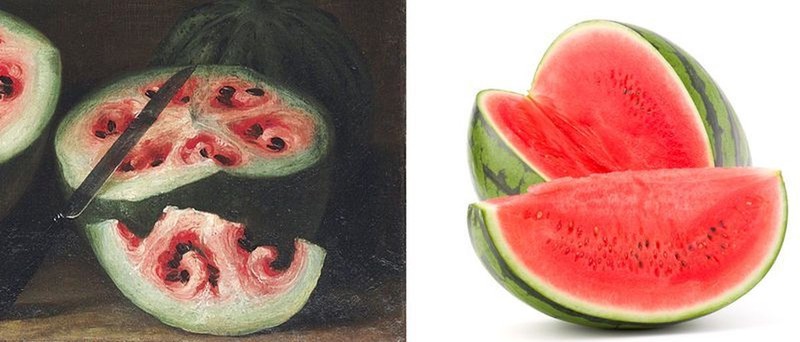On the left - this is how a watermelon looked in the XVII century. On the right – this is how he became thanks to selection for more than 300 years.

The artist Giovanni Stanki captured a watermelon in his "Still Life with watermelons" in the second half of the 1600s.
This is a clear illustration of the results of breeding. We see that 300 years ago the peel of a watermelon was much thicker. And the sweet pulp is separated by a stiff fabric. The bones were also much larger.
As a result of selection, people chose watermelons that are most suitable for our menu. Sweeter, juicier, with a thinner skin and small seeds. Such a watermelon will no longer be able to survive in the wild - therefore, he himself would never have acquired these qualities. But now a person takes all the questions about growing watermelon on himself.
Comments